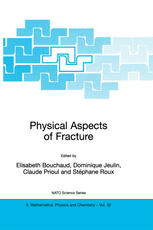

Most ebook files are in PDF format, so you can easily read them using various software such as Foxit Reader or directly on the Google Chrome browser.
Some ebook files are released by publishers in other formats such as .awz, .mobi, .epub, .fb2, etc. You may need to install specific software to read these formats on mobile/PC, such as Calibre.
Please read the tutorial at this link: https://ebookbell.com/faq
We offer FREE conversion to the popular formats you request; however, this may take some time. Therefore, right after payment, please email us, and we will try to provide the service as quickly as possible.
For some exceptional file formats or broken links (if any), please refrain from opening any disputes. Instead, email us first, and we will try to assist within a maximum of 6 hours.
EbookBell Team

4.0
56 reviewsThe main scope of this Cargese NATO Advanced Study Institute (June 5-17 2000) was to bring together a number of international experts, covering a large spectrum of the various Physical Aspects of Fracture. As a matter of fact, lecturers as well as participants were coming from various scientific communities: mechanics, physics, materials science, with the common objective of progressing towards a multi-scale description of fracture. This volume includes papers on most materials of practical interest: from concrete to ceramics through metallic alloys, glasses, polymers and composite materials. The classical fields of damage and fracture mechanisms are addressed (critical and sub-critical quasi-static crack propagation, stress corrosion, fatigue, fatigue-corrosion . . . . as well as dynamic fracture). Brittle and ductile fractures are considered and a balance has been carefully kept between experiments, simulations and theoretical models, and between the contributions of the various communities. New topics in damage and fracture mechanics - the effect of disorder and statistical aspects, dynamic fracture, friction and fracture of interfaces - were also explored. This large overview on the Physical Aspects of Fracture shows that the old barriers built between the different scales will soon "fracture". It is no more unrealistic to imagine that a crack initiated through a molecular dynamics description could be propagated at the grain level thanks to dislocation dynamics included in a crystal plasticity model, itself implemented in a finite element code. Linking what happens at the atomic scale to fracture of structures as large as a dam is the new emerging challenge.